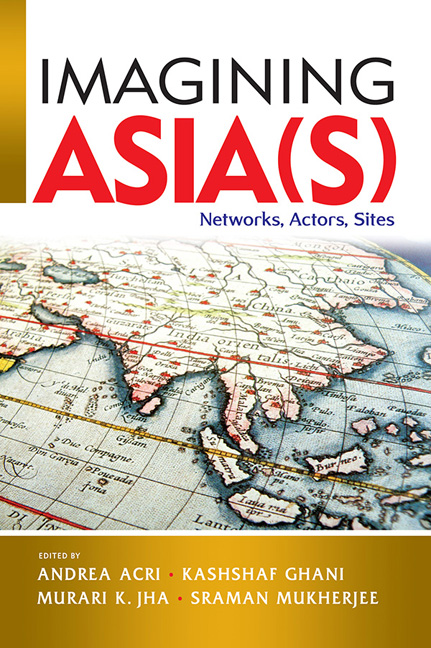Book contents
- Frontmatter
- Contents
- List of Contributors
- Introduction
- Part I Conceptualizing the Region: Past and Present
- Part II Conceptualizing Asia through the Prism of Europe
- Part III Networks of Knowledge Across the Indian Ocean
- Part IV Histories and Geographies of Pilgrimage in Asia
- Part V Trans-Local Dynamics and Intra-Asian Connections across Space and Time
- 10 Sanskritic Buddhism as an Asian Universalism
- 11 Interconnectedness and Mobility in the Middle Ages/Nowadays: From Baghdad to Chang'an and from Istanbul to Tokyo
- 12 Connecting Networks and Orienting Space: Relocating Nguyen Cochinchina between East and Southeast Asia in the Sixteenth and Eighteenth Centuries
- 13 The Highlands of West Sumatra and their Maritime Trading Connections
- Index
10 - Sanskritic Buddhism as an Asian Universalism
from Part V - Trans-Local Dynamics and Intra-Asian Connections across Space and Time
Published online by Cambridge University Press: 31 January 2020
- Frontmatter
- Contents
- List of Contributors
- Introduction
- Part I Conceptualizing the Region: Past and Present
- Part II Conceptualizing Asia through the Prism of Europe
- Part III Networks of Knowledge Across the Indian Ocean
- Part IV Histories and Geographies of Pilgrimage in Asia
- Part V Trans-Local Dynamics and Intra-Asian Connections across Space and Time
- 10 Sanskritic Buddhism as an Asian Universalism
- 11 Interconnectedness and Mobility in the Middle Ages/Nowadays: From Baghdad to Chang'an and from Istanbul to Tokyo
- 12 Connecting Networks and Orienting Space: Relocating Nguyen Cochinchina between East and Southeast Asia in the Sixteenth and Eighteenth Centuries
- 13 The Highlands of West Sumatra and their Maritime Trading Connections
- Index
Summary
The concept of Sanskritic Buddhism is discussed here in connection with the problem of a standard, common or universal form of the Buddhist religion. Buddhism has a heterogeneous appearance, manifesting in a variety of sects and ethnic or national types, and whatever homogeneity it possesses has been hard to articulate, both for those within the religion as well as for those outside it. The question of how much of Buddhism is universal, that is, especially prevalent and accepted, cannot be answered solely with citations of canonical scripture, as every sect has its own canonical language and iteration of the canon. What will be discussed in this chapter is the notion of commonality, and in particular the applications of a common discursive or metadiscursive protocol. The focus will be on the use of Sanskrit, the only canonical language of Buddhism that was also a sacred language for non-Buddhists within its native territory.
Some of the factors that led Buddhists to take up Sanskrit—originally the preserve of Brahmins, an exclusive “language of the gods”—have most recently been examined by Johannes Bronkhorst, Vincent Eltschinger, Jan Houben and others. As the rationales for adoption are now receiving due scholarly attention, this chapter will examine the ways in which Sanskrit and Buddhism work together in practice, and the extent to which this combination displays a degree of universality that is not found in either the language or the religion on its own. To this end, both the classical and the modern situation will be looked at, as they complement each other and demonstrate different kinds of universality. Many other aspects of Sanskritic Buddhism, such as its associated canons, genres, institutions, social systems, writing systems, and constructions of sacred space, are yet to be studied systematically and can be mentioned only in passing here.
THE SANSKRIT LANGUAGE IN COMBINATION WITH THE BUDDHIST RELIGION
Sanskritic Buddhism is the form of the Buddhist religion that propagates some or all of its discourses in a variety of Sanskrit. A Sanskritic environment is one in which other languages can be used together with Sanskrit, or where a non-standard variety of Sanskrit can be used. The expression “Sanskritic Buddhism” was probably first used in a 1906 review referring to “Northern (Sanskritic) Buddhism”.
- Type
- Chapter
- Information
- Imagining Asia(s)Networks, Actors, Sites, pp. 275 - 333Publisher: ISEAS–Yusof Ishak InstitutePrint publication year: 2019

